Homemade Salmon Gravlax (Easy Scandinavian Cured Salmon Recipe)

Homemade Salmon Gravlax is the recipe for preparing a simple and tasty fish appetizer at home. It is a solution that allows us to avoid buying smoked salmon, which is certainly more expensive, and to consume a product free of colorants and additives. In our version we will make a Swedish-style marinade of salmon fillets, also called dry, that is, with coarse salt, sugar, dill and wild fennel. The fish thus seasoned is left to marinate in the refrigerator, well covered, for at least 8 hours.
Once the salt has been removed and the salmon has been rinsed thoroughly, it is cut into thin slices and seasoned with a vinaigrette made from extra virgin olive oil, lemon juice, aromatic herbs and black pepper. Marinated salmon is exceptionally versatile and tasty: perfect for opening a fish-based menu in style, especially during the Christmas holidays, it can also be served during brunch time, accompanied by slices of toasted bread or, as Scandinavian tradition dictates, with crunchy cereal and rye bread and curls of butter.
What is Salmon Gravlax?
Salmon gravlax, a cured and marinated delicacy, originates from the Nordic tradition, where fish preservation was essential for survival through long, cold winters. Traditionally, Scandinavian fishermen would salt and bury salmon in the sand above the high-tide line, allowing it to ferment slightly—hence the name "gravlax," from the Swedish words grav (grave) and lax (salmon). This method preserved the fish and developed its unique, savory flavor.
Modern gravlax as we know it, with a marinade of salt, sugar, and dill, emerged around the 19th century, when fermentation was replaced by cold curing. Homemade versions became popular worldwide in the late 20th century as global interest in DIY cooking and Scandinavian cuisine grew, inspiring people to recreate this once-essential preservation technique at home for its fresh, sophisticated taste.
Pro Tips for The Best Homemade Salmon Gravlax
- Choose a high-quality, fresh piece of salmon from a reputable source for the best flavor and texture.
- Prepare the marinade with equal parts salt and sugar for balanced curing, and add plenty of fresh dill for traditional Nordic flavor.
- Cover the salmon evenly with the marinade, pressing down gently to help it penetrate the fish.
- Wrap the salmon tightly in plastic wrap to lock in flavors and ensure even curing.
- Place a small weight, like a plate or canned goods, on top to gently press the fish.
- Refrigerate for 24-48 hours, turning once halfway through for an even cure.
- Slice thinly against the grain for a smooth, melt-in-your-mouth texture.
Salmon Gravlax Vs. Lox Vs. Smoked
Gravlax is cured with salt, sugar, and dill, often without smoking, giving it a fresh, herbaceous taste. Lox, traditionally associated with Jewish cuisine, is cured with salt but not smoked, resulting in a pure, salty flavor. Smoked salmon, on the other hand, is both cured and cold- or hot-smoked, adding a rich, smoky layer to its taste.
What Type of Salmon is The Best for Homemade Gravlax?
For the best gravlax, choose a fresh, high-quality, fatty salmon like wild-caught King or Atlantic salmon. These varieties have a rich flavor and buttery texture, which hold up well during the curing process. Look for sushi-grade salmon if possible, as it ensures the highest freshness and quality.
Can I Use Frozen Salmon Instead?
Yes, you can! In fact, freezing salmon beforehand is recommended, as it kills potential parasites, making it safer to eat. Just thaw the fish completely in the fridge before curing to achieve the best texture and flavor.
Is Homemade Gravlax Safe?
Homemade gravlax is generally safe to eat if prepared with fresh or previously frozen salmon, as freezing helps eliminate parasites. Proper curing with salt and sugar further reduces bacteria, but it’s essential to keep the fish refrigerated throughout the process. Following these steps ensures that homemade gravlax is both delicious and safe to enjoy.
Can I Add Something Else to The Marinade?
Salmon can be marinated in many different ways. You can prepare a salmon tartare or carpaccio and marinate them with an emulsion made from lemon juice, extra virgin olive oil, salt and pink pepper. Instead of lemon, you can also use orange juice and add chives.
Alternatively, you can make a vinegar marinade: leave the salmon to marinate for 2-3 hours in a tray with apple cider vinegar or, alternatively, balsamic vinegar, chives, extra virgin olive oil and a little chili pepper.
Can I Use Other Types of Fishes for This Gravlax?
Yes, other types of fatty fish, such as trout, arctic char, and mackerel, can be used to make gravlax. These fish share a similar texture and fat content with salmon, which allows them to absorb the flavors of the cure well. Just ensure they’re fresh and, ideally, previously frozen to eliminate any risk of parasites.
How Do I Slice Salmon Gravlax?
To cut gravlax, use a sharp, thin-bladed knife and slice it thinly at a slight angle. Start from the tail end, cutting across the grain to achieve smooth, delicate slices. Aim for even, thin cuts to bring out the best texture and flavor in each piece.
What Can I Serve With Salmon Gravlax?
Salmon gravlax pairs beautifully with rye bread or crispbread, often served with mustard-dill sauce, known as hovmästarsås in Scandinavian tradition. It can also be enjoyed with pickled onions, capers, fresh dill, lemon wedges, or thinly sliced cucumbers for a refreshing touch. For a full Scandinavian spread, add boiled potatoes and a side of sour cream or crème fraîche.
Can I Make Homemade Salmon Gravlax Ahead of Time?
You can! Once cured, it keeps well in the refrigerator for up to a week. For the best flavor, prepare it 1-2 days in advance, allowing the seasonings to fully penetrate. Store it tightly wrapped to maintain freshness.
Does Homemade Salmon Gravlax Freeze Well?
Yes, salmon gravlax freezes well and can be kept frozen for up to two months. To preserve its texture, slice it first and wrap the slices tightly in plastic wrap or place them in an airtight container. Thaw in the refrigerator when ready to serve to maintain the best flavor and texture.
More Salmon Appetizers You Can Try!
Cream Cheese and Salmon Puff Pastry Spoons
How to Store Homemade Salmon Gravlax
Marinated salmon can be stored in the refrigerator, in an airtight container, for up to 1 day.
Ingredients
How to Make Homemade Salmon Gravlax
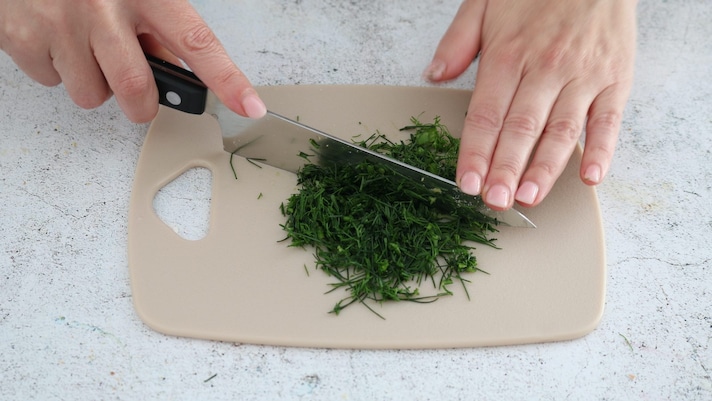
Chop the dill and wild fennel very finely.
Chop the dill and wild fennel very finely.
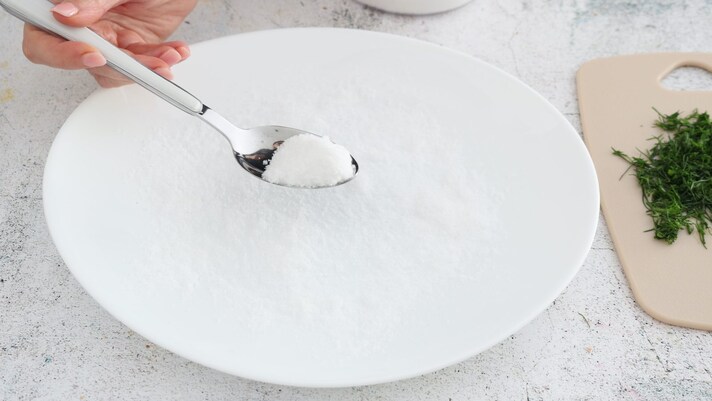
Spread the fine salt on the bottom of a tray.
Spread the fine salt on the bottom of a tray.
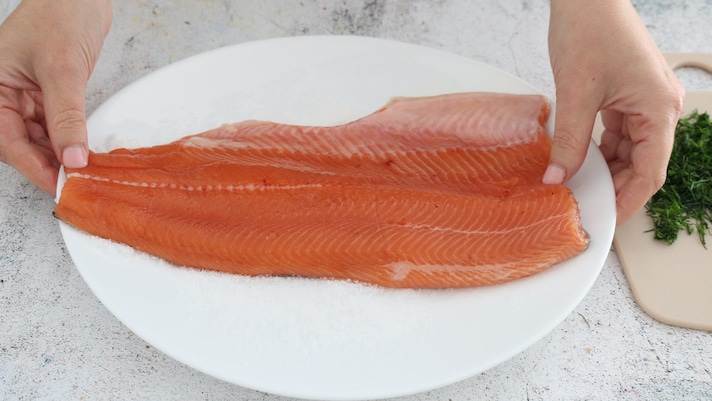
Place the salmon fillet on the salt.
Place the salmon fillet on the salt.
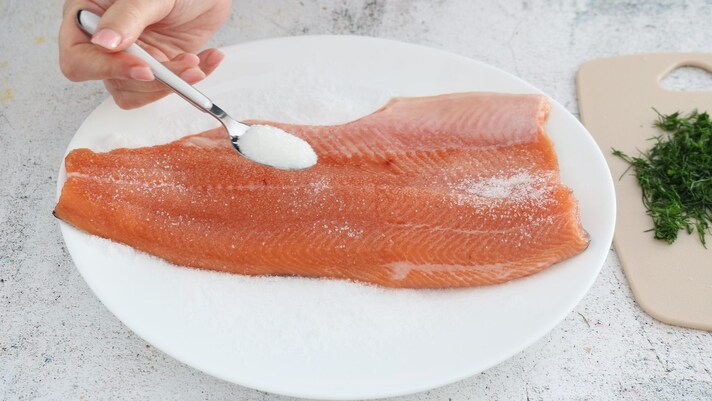
Sprinkle the fish with sugar.
Sprinkle the fish with sugar.

Spread the chopped herbs on the salmon fillet.
Spread the chopped herbs on the salmon fillet.
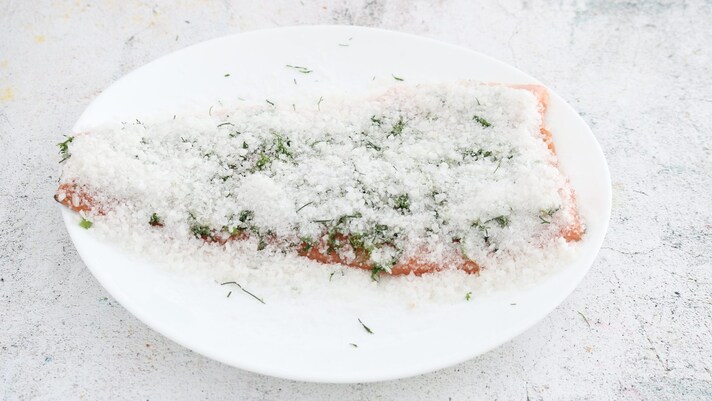
Cover with the coarse salt.
Cover with the coarse salt.
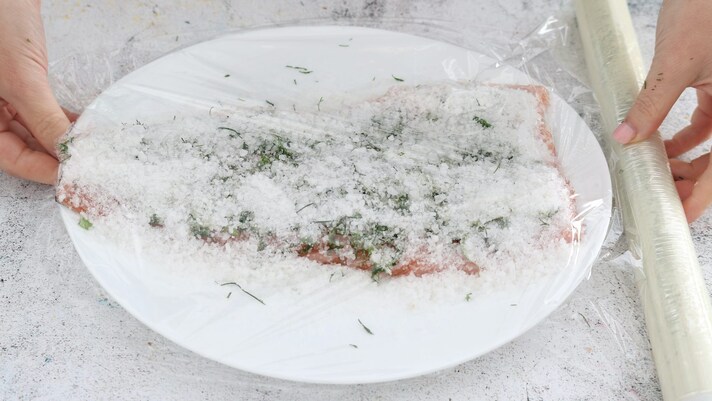
Cover with cling film, wrapping it tightly.
Cover with cling film, wrapping it tightly.
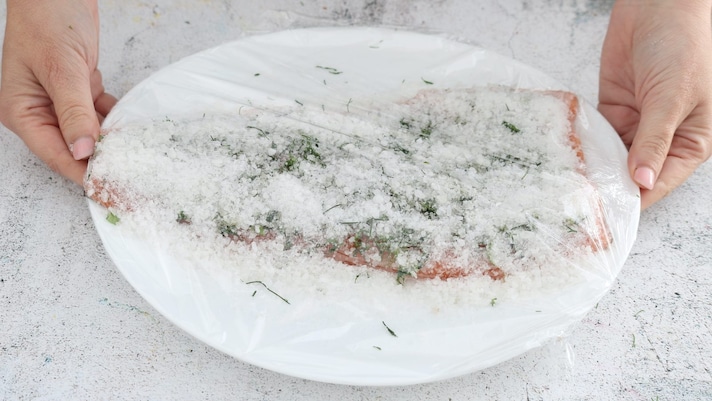
Place the salmon in the refrigerator for at least 8 hours.
Place the salmon in the refrigerator for at least 8 hours.
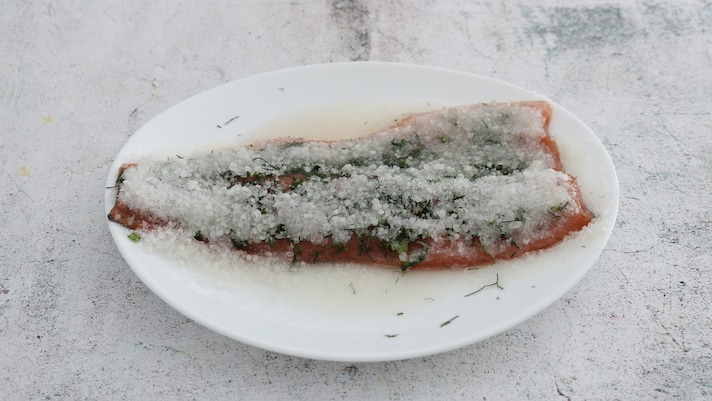
Once the marinating time is over, take the salmon out of the refrigerator.
Once the marinating time is over, take the salmon out of the refrigerator.
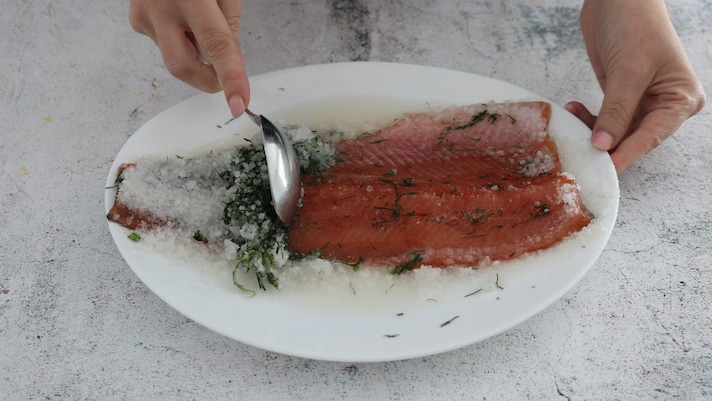
Using a spoon, remove all the salt and herbs on the surface. Rinse the salmon fillet thoroughly under cold running water.
Using a spoon, remove all the salt and herbs on the surface. Rinse the salmon fillet thoroughly under cold running water.
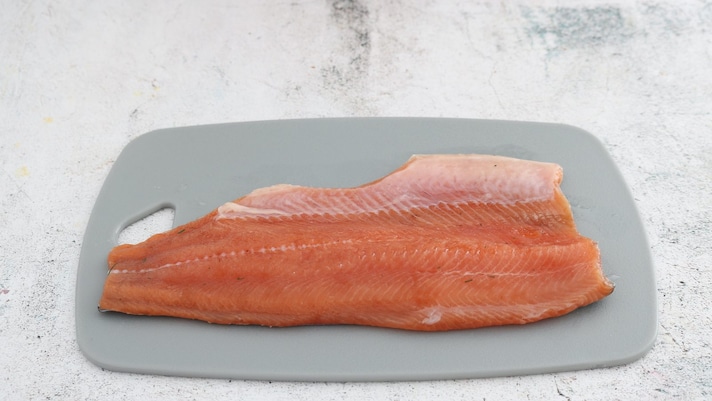
Place the marinated salmon on a cutting board.
Place the marinated salmon on a cutting board.
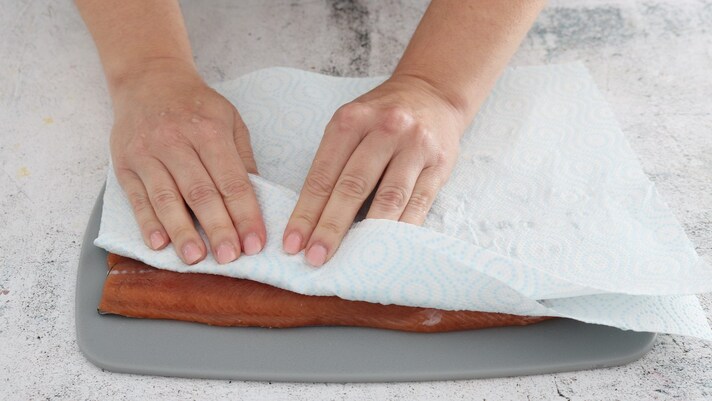
Dry the salmon by patting it dry with a sheet of kitchen paper.
Dry the salmon by patting it dry with a sheet of kitchen paper.
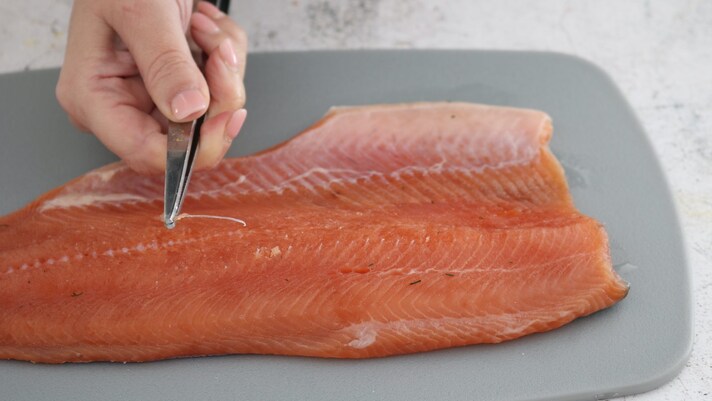
Check if there are any bones and remove them by pulling them out with tweezers.
Check if there are any bones and remove them by pulling them out with tweezers.
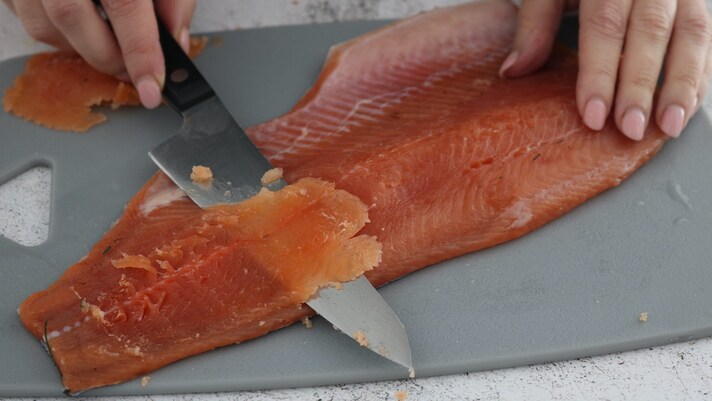
Using a sharp, smooth-bladed knife, cut the marinated salmon slices.
Using a sharp, smooth-bladed knife, cut the marinated salmon slices.
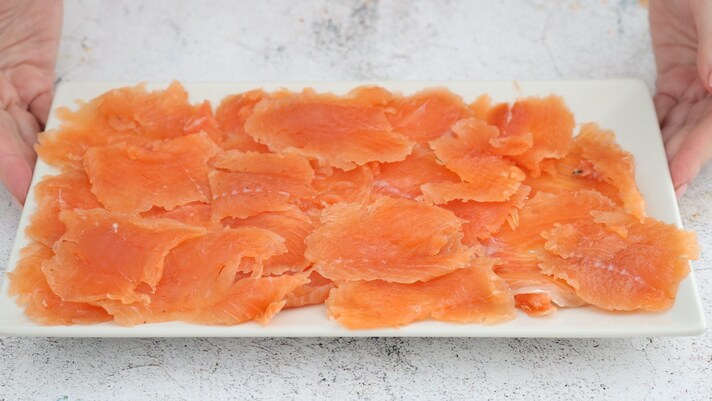
Arrange the marinated salmon slices on a serving tray.
Arrange the marinated salmon slices on a serving tray.

Prepare the dressing by pouring the extra virgin olive oil into a glass jar.
Prepare the dressing by pouring the extra virgin olive oil into a glass jar.
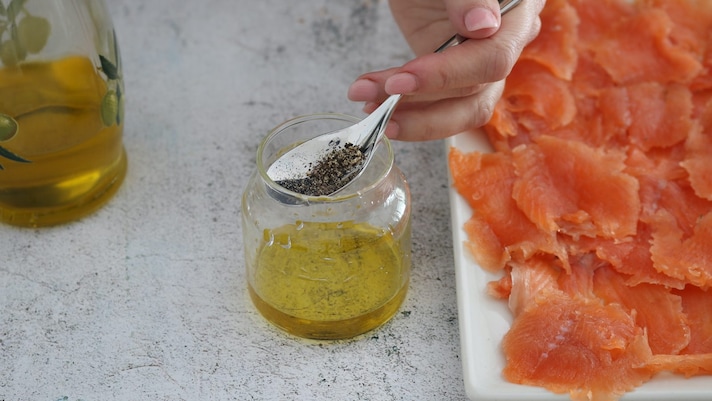
Add the ground black pepper.
Add the ground black pepper.
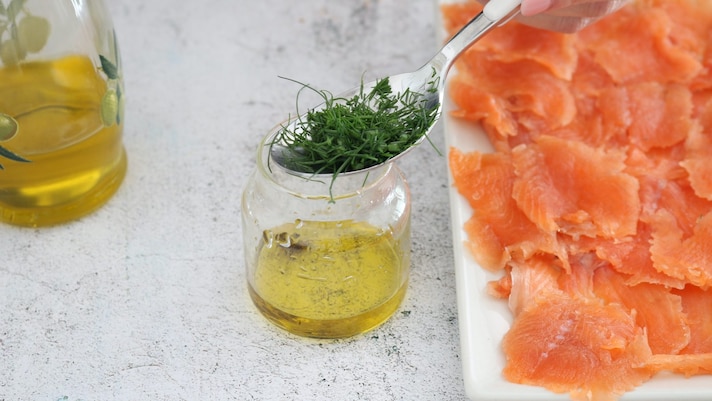
Combine the chopped wild fennel and dill.
Combine the chopped wild fennel and dill.
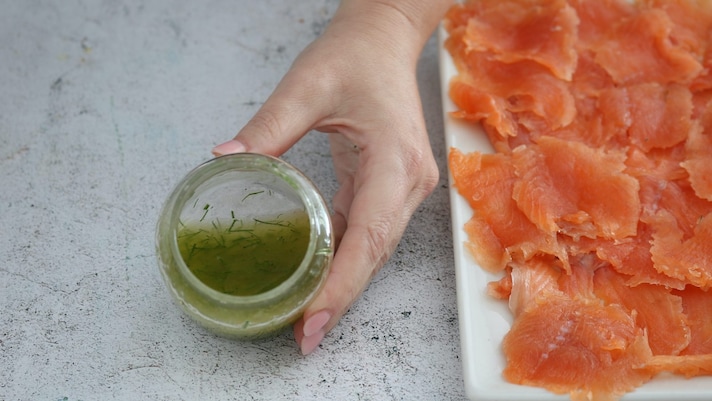
Pour the lemon juice, close the jar with the lid and emulsify the dressing.
Pour the lemon juice, close the jar with the lid and emulsify the dressing.
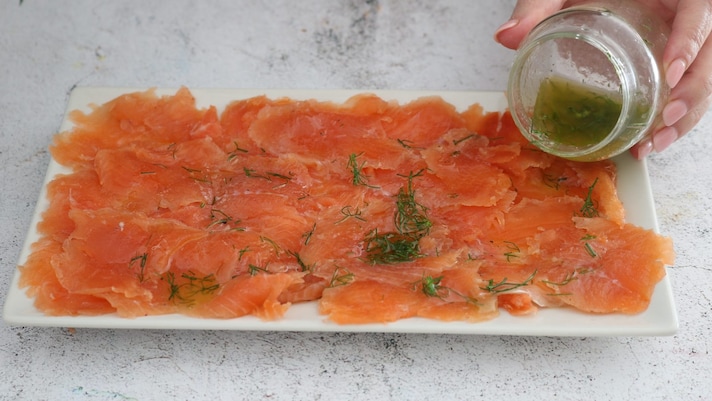
Sprinkle the marinated salmon with the sauce.
Sprinkle the marinated salmon with the sauce.
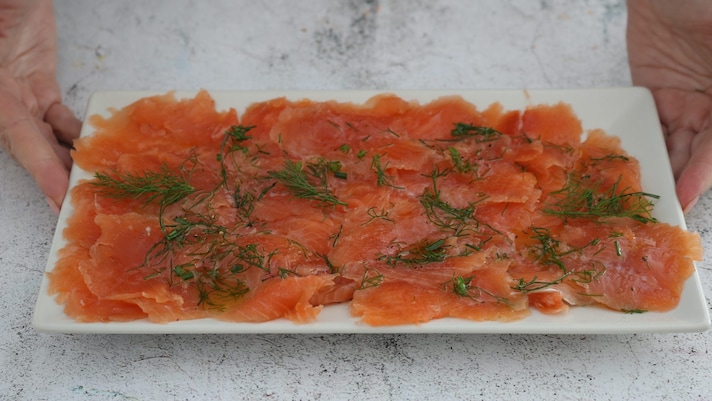
Your homamade gravlax salmon is now ready.
Your homamade gravlax salmon is now ready.
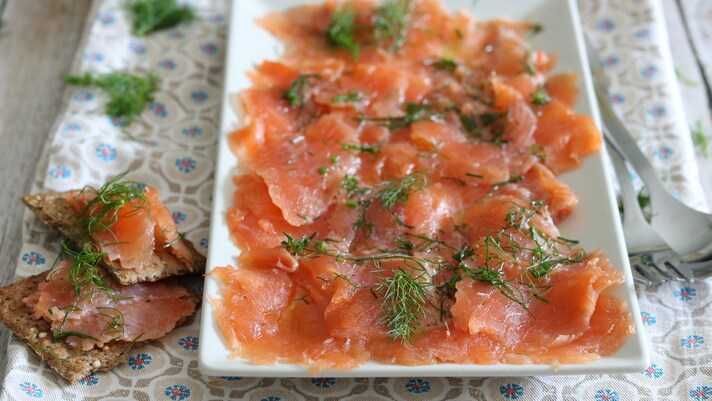
Enjoy!
Enjoy!
;Resize,width=767;)

;Resize,width=712;)
;Resize,width=712;)
